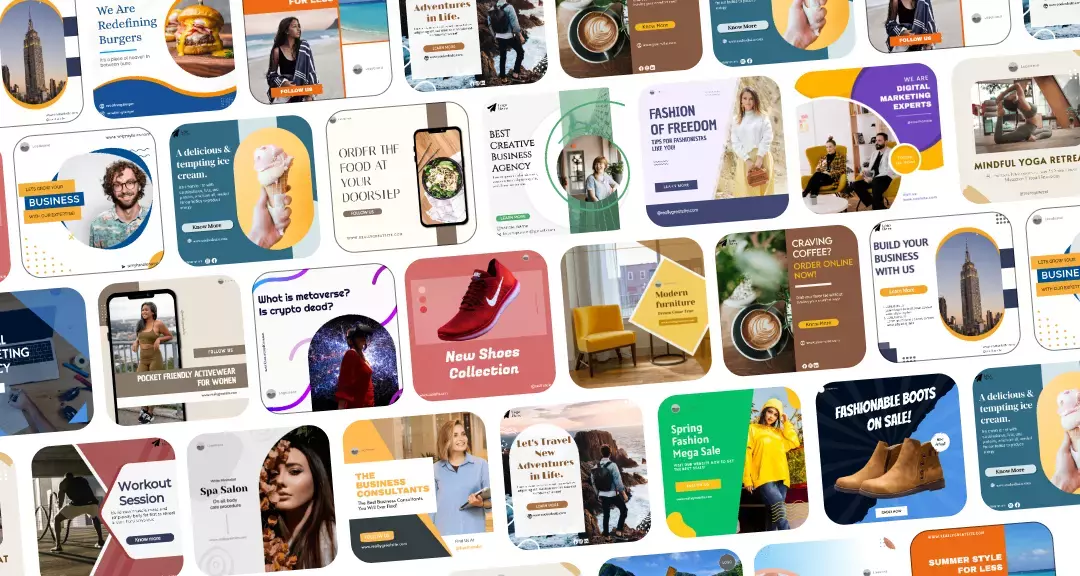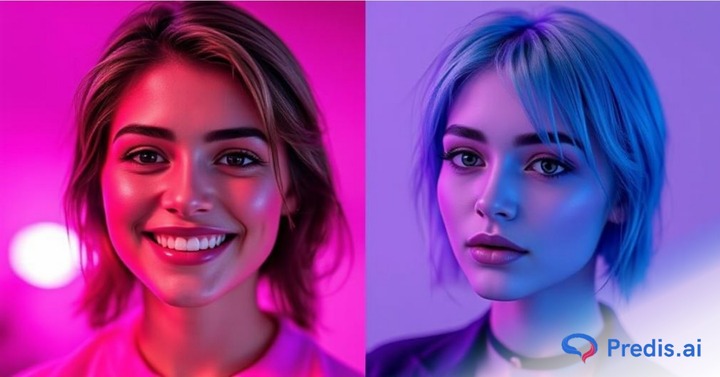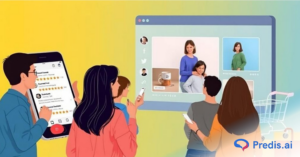The rise of synthetic UGC in advertising is rewriting the rules of authenticity. What once took a team of creators, actors, and editors can now be produced by an AI model in minutes—polished, scalable, and eerily human. But with that power comes a growing question that’s hard to ignore: if the “users” behind this content aren’t real, is the connection we’re creating ethical?
Synthetic UGC, or synthetic user-generated content, refers to videos, photos, or reviews generated by artificial intelligence to mimic real customer experiences. It’s the next step in marketing evolution AI-generated influencers, brand advocates, and product reviewers designed to look, sound, and act like us.
Marketers love it for its efficiency. Consumers, however, are starting to wonder if they’re being deceived. The tension sits right at the intersection of trust and technology and it’s only growing sharper as AI tools flood the market.
This isn’t a “good vs. evil” debate. It’s about intent, disclosure, and how brands balance authenticity with innovation. Let’s break down what synthetic UGC really is, why it matters, and how brands can navigate its ethical maze without losing credibility or customers.
TL;DR 🖋
Synthetic UGC (user-generated content created using AI) is reshaping how brands connect with audiences but it also raises big questions about authenticity, consent, and trust. Here’s the essence of what you need to know:
What’s Inside
- Understanding Synthetic UGC – What it is, how it differs from real UGC, and why brands are embracing it.
- The Ethical Dilemma – From transparency issues to consumer deception and brand accountabilit
- Real-World Cases – Nike, Coca-Cola, and startups experimenting with AI-driven influencer content.
- Legal & Regulatory Landscape – Current laws, grey areas, and what’s coming next.
- Consumer Psychology – Why audiences crave authenticity and how fake UGC impacts emotional trust.
- Balancing Innovation with Integrity – Frameworks for ethical AI adoption in advertising.
- The Future of Ethical UGC – Predicting how the ad industry will redefine “authentic” in an AI-first era.
Understanding Synthetic UGC in Advertising
Before we can question the ethics, we need to understand what synthetic UGC actually means, how it’s being used, and why it’s become a marketer’s dream (and dilemma).
1. What Is Synthetic UGC?
Synthetic UGC refers to AI-generated content designed to look and feel like authentic user-created media. Think of it as digital mimicry AI models that produce testimonials, reviews, and influencer-style videos without any human creator behind them.

This includes:
- AI influencers like Lil Miquela or Shudu Gram
- Virtual product reviewers that look human but are fully artificial
- Text-based testimonials written by AI to simulate real customer feedback
Unlike traditional brand ads, synthetic UGC borrows the emotional texture of human storytelling casual tone, off-script dialogue, imperfections that feel real—yet it’s fully manufactured.
And as realistic as this content appears, it opens up deeper questions about ownership, rights, and potential misuse. If you want a clearer understanding of the legal and ethical challenges behind AI-generated faces and voices, this breakdown on the copyright and ethical risks in deepfakes explains exactly what brands should watch out for.
2. The Rise of Synthetic Media in Marketing
By 2025, an estimated 90% of online content will be AI-generated (EU DisinfoLab, 2024). That statistic alone explains the surge in synthetic media use.
Brands are using AI to:
- Scale campaigns globally without hiring actors or creators
- Maintain consistent messaging across demographics
- Personalize ads for micro-audiences
What started as a creative experiment is now a mainstream strategy. Industries from retail and fintech to healthcare and education are adopting it to cut costs and speed up production cycles.
3. Case Study: The Virtual Influencer Lil Miquela
Lil Miquela, a virtual influencer with over 2 million Instagram followers, has collaborated with Prada, Calvin Klein, and Samsung. She’s not real but her influence is.

Audiences knew she was artificial, yet her relatability and curated persona blurred the lines between fiction and reality. Brands saw engagement spikes and massive media attention. The key lesson: transparency didn’t harm her success, it enhanced it.
4. Why Marketers Are Turning to Synthetic UGC?
Marketers love synthetic UGC for its:
- Speed – AI can generate hundreds of assets overnight.
- Cost efficiency – No production crew, sets, or retakes.
- Control – Every frame aligns with brand voice and guidelines.
- Personalization – Tailor one message for thousands of audience segments.
But it’s a double-edged sword control can slide into manipulation when disclosure is ignored.

The Psychology of Authenticity and Trust in Advertising
Advertising runs on trust. And trust, in turn, relies on authenticity. Synthetic UGC tests that relationship by presenting something that feels genuine but isn’t. So how does the human brain process that and when does it start to feel manipulated?
1. Why Authenticity Drives Conversions?
A Stackla (2023) study found that authentic UGC increases purchase intent by 2.4x. People trust people not logos. Genuine imperfections, real voices, and candid visuals create emotional resonance.
Authenticity works because:
- It triggers social proof—if others like it, it must be good.
- It reduces skepticism, especially in saturated markets.
- It connects emotionally, not transactionally.
Synthetic UGC mimics these cues but lacks human spontaneity, which can break that subconscious trust.
2. How Synthetic UGC Challenges Perception?
Humans have a built-in truth bias we tend to believe what looks and sounds real. Synthetic UGC exploits that. When an AI-generated person says “I love this product,” our brains respond as though it’s a peer review.
This can be powerful but deceptive if undisclosed. It plays with emotional advertising, making consumers feel connected to something that doesn’t exist.
3. Case Study: AI-Generated Reviews on Amazon
Amazon recently cracked down on thousands of AI-written product reviews that misled consumers. These fake testimonials inflated product ratings and manipulated buyer perception.

The backlash led to increased skepticism even toward legitimate reviews a clear example of how synthetic manipulation erodes ecosystem-wide trust.
4. The Emotional Gap Between Real and Synthetic Voices
Even with perfect visuals, AI still struggles with emotional nuance. Humans express micro-emotions hesitation, humor, warmth that AI often misses. This gap makes synthetic voices compelling short-term but forgettable long-term.
The Ethical Debate: Transparency vs. Innovation
Here’s where the real debate begins. Is synthetic UGC inherently deceptive or is it only unethical when brands hide its origin? The answer depends on how we define ethical marketing in the age of AI.
1. Defining Ethical Marketing in the Age of AI
Ethical marketing isn’t about playing it safe it’s about honesty, accountability, and intent.
- Does the audience know what’s real?
- Is consent given when likenesses are used?
- Does AI enhance communication, or manipulate it?
Ethical boundaries blur fast when content generation becomes autonomous.
2. The Fine Line Between Persuasion and Deception
All advertising persuades. The ethical question is: does it deceive?
Synthetic UGC can cross that line by impersonating real users without disclosure. The difference between AI assistance and AI impersonation is crucial.
- Assistance = AI helps creators express themselves.
- Impersonation = AI replaces humans to simulate false endorsement.
3. Case Study: The Balenciaga Deepfake Scandal
When deepfake ads circulated featuring fake celebrity endorsements for Balenciaga, public outrage followed. None of the celebrities had consented.
The incident sparked legal debate and highlighted the ethical requirement for consent in synthetic branding. Even when intent isn’t malicious, perception shapes impact.
4. Legal Landscape and Advertising Standards
Regulators are catching up fast.
- The FTC now requires clear disclosure for AI-generated endorsements.
- The EU AI Act mandates transparency for synthetic media.
- India’s IT Rules 2023 warn against undisclosed manipulative AI use.
Brands ignoring these evolving standards risk fines and lasting damage to credibility.

Building Ethical Frameworks for Synthetic UGC
If brands want to future-proof their marketing, they need a solid ethical framework. Transparency, accountability, and clear disclosure aren’t just moral imperatives they’re strategic advantages.
1. Establishing Transparent Disclosure Policies
Start simple: label synthetic content clearly.
- Add “AI-generated” or “synthetic media” tags.
- Include transparency notes in captions or metadata.
- Follow examples like Meta’s AI disclosure initiative (2024).
Honesty builds long-term trust even among AI-savvy audiences.
2. Creating Internal Ethical Guidelines for AI Use
Every brand should draft an AI use policy defining:
- What kind of synthetic content is acceptable
- Approval processes before publication
- Training employees to detect and disclose AI use
Without internal ethics, external credibility collapses.
3. Collaborating with Regulatory Bodies and Platforms
Brands can’t self-regulate alone. Collaboration with industry coalitions, social platforms, and policymakers will define responsible AI standards. Early adopters of these practices will set the tone for the industry.
4. Case Study: Dove’s “Real Beauty” Ethos vs. Synthetic Trends
Dove’s campaigns champion real people no filters, no fakery. Compare that to synthetic alternatives, and you see why authentic storytelling still wins in emotional recall and brand loyalty.

AI can complement this ethos, but never replace it.
Conclusion
Synthetic UGC isn’t inherently unethical it’s a mirror reflecting human intent. Used responsibly, it’s a creative breakthrough. Used deceptively, it’s a credibility killer.
The balance lies in transparency, consent, and conscience. Brands that disclose their use of synthetic media will be seen as innovators. Those that hide it will be labeled manipulators.
What this really means is simple: technology doesn’t decide ethics people do. And in a world where authenticity is the most valuable currency, honesty will always outperform perfection.















